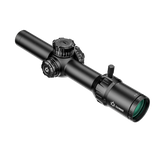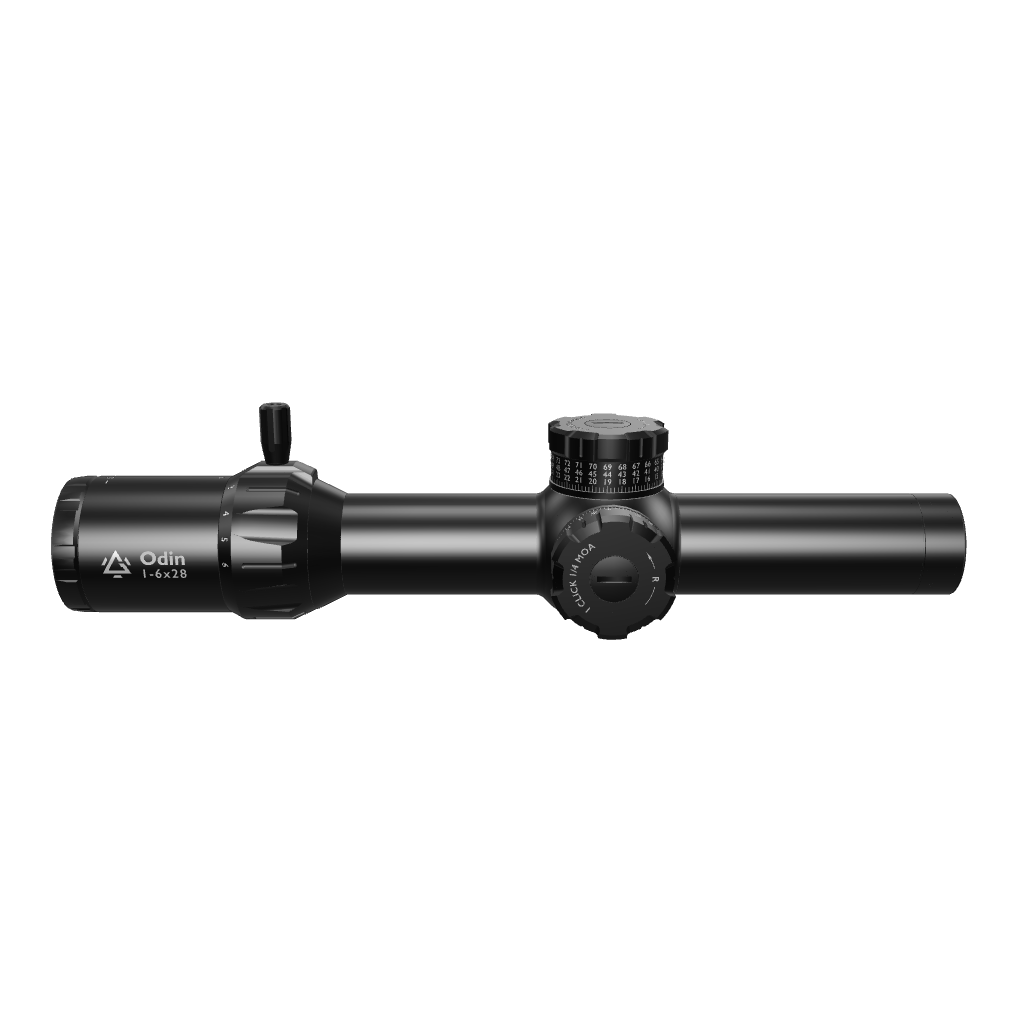Lightweight LPVOs: Why Weight Matters
Every ounce counts when you’re building your own rifle. From the stock to the muzzle device, experienced shooters know that balance is just as important as accuracy.
This goes for your optic too.
While Low Power Variable Optics (LPVOs) are regarded as versatile by most, their weight can really impact your rifle's performance.
When is an LPVO Considered Lightweight?
Generally, an LPVO is considered lightweight if it weighs under 23 ounces (around 650 grams), and then there are heavier LPVOs with higher magnification ranges, like 1-10x, which can easily weigh more.
A true lightweight LPVO scope averages a 16-19 ounce range. These optics are engineered to weigh fewer ounces with their compact designs, sometimes with a smaller objective lens or a streamlined housing. Of course, it doesn’t compromise the core functionality that makes an LPVO effective.
Advantages of Using a Lightweight LPVO
A lighter optic offers several practical benefits that you’ll feel immediately, whether you're on the move or hunting for long hours. The primary advantage is improved handling and balance, and for some, it just feels better.
A lighter scope, especially a lightweight 1-6 LPVO, prevents the rifle from feeling front-heavy, which is best for range shooters who quickly transition between targets. It also reduces fatigue during extended use.
Here’s why some prefer lightweight LPVOs:
- Competition Shooting: In competition shooting or tactical scenarios, speed is important. Most shooters prefer a lighter rifle that allows them to engage targets faster and can be easily shouldered.
- Hunting: For hunters who navigate dense terrain to track game, a lighter rifle makes a big difference. A rifle with a lighter LPVO makes the trek more bearable and allows for quicker, more stable shooting when a deer appears, for example.
- General Purpose: For an all-around AR-15, a lightweight LPVO 1-6 makes the platform more manageable and enjoyable for recreational shooting. With more maneuverability, the rifle feels just like it should.

Tradeoffs of Lightweight LPVOs
While the benefits of a lightweight rifle can definitely make a difference, opting for the best lightweight LPVO doesn’t come without disadvantages.
Many LPVOs are manufactured in a way that’s supposed to maintain their lens quality and housing durability while shaving off weight as much as possible. Reducing weight can affect an LPVO’s sturdiness and even optical performance.
Heavier optics often feature larger main tubes (like 34mm vs. 30mm) and thicker internal components, making them more resistant in harsh weather. A lighter scope with a smaller tube or thinner housing doesn’t take impact well, especially when it’s accidentally dropped or handled improperly.
The potential disadvantages of a lightweight LPVO are:
- Reduced Magnification Range: Many lightweight models are 1-4x or 1- 6x. Higher magnification ranges like 1-8x or 1-10x require larger glass elements, which add weight.
- Optical Quality: Some designs have smaller objective lenses, which can limit light transmission and give off a dimmer image in low-light conditions. That’s why some high-end LPVOs use quality glass designs and advanced coatings.
- Fewer Features: Lightweight LPVOs have simpler, capped turrets or a more basic illumination system, while other LPVOs have essential features like turret systems with zero-stop, illumination modules, and integrated throw levers.
When Does a Lightweight LPVO Make Sense?
A lightweight LPVO is the ideal choice when mobility and speed are in question.
For example, if you use your rifle in dynamic situations when you’re on your feet, moving quickly, and engaging targets at various distances, a lighter rifle is a no-brainer.
Run-and-gun competition shooters definitely have multiple lightweight setups at the ready. This also goes for anyone who wants to keep their general-purpose rifle as lightweight and maneuverable as possible.
For most shooters, the goal isn’t to build a long-range precision platform, but to have a balanced weapon with sturdy handling that absorbs recoil well. This means combining different segments to create your own platform that can serve you well.
When Should You Go for a Normal Weight LPVO?
A heavier LPVO is the better choice for durability and advanced features that are suitable for long-range shooters who don’t mind a little more weight to their rifle.
A lighter scope can make your rifle feel more responsive and cause less fatigue when carrying, but ultimately, the choice depends on your specific purpose.
You should go for a heavier LPVO if you need:
- Precision: Higher magnification scopes (1-8x or 1- 10x) are heavier but are a must-have for engaging targets beyond 500 yards. The larger objective lenses and optical systems in these scopes provide better image quality at high magnification.
- Durability: Hunters often face harsh conditions and rainy weather, so having optics with robust construction and waterproof features goes without saying. Military-grade main tubes and internals are designed to absorb shocks and hold zero, no matter what.
- Usability: If you prefer exposed turrets for dialing elevation and windage, a crisp zero-stop mechanism, or brighter reticles, you’re looking at heavier models that often have multiple features. Professional shooters prioritize usability over saving weight.
- Absorption: If you're building a Designated Marksman Rifle (DMR) or a rifle intended for stationary or prone shooting, the extra weight can absorb recoil and increase stability.

Affordable LPVOs from Gunnr
We know it’s difficult for most buyers to choose between affordability and quality. The Gunnr's Odin line of LPVOs is engineered to deliver premium performance at an accessible price point, which proves you can have a high-quality, reliable optic without breaking the bank.
The Odin 1-6x28 FFP LPVO is one such optic, striking the balance between weight and convenience. It offers both the versatility of a true 1x optic for close quarters and a capable 6x for mid-range engagements, making it a great all-around tactical optic.
The Odin 1-6x28 is made of durable 7075 aluminum alloy and has German Schott ED glass for optical clarity from a much more expensive scope. Additionally, it has an FFP reticle and daylight-bright illumination for those of you who prefer more visibility.
Looking for high-quality optics at affordable prices? Learn more about Gunnr’s optics on our website. Lightweight or heavyweight, we have the ideal optics to suit your needs.







